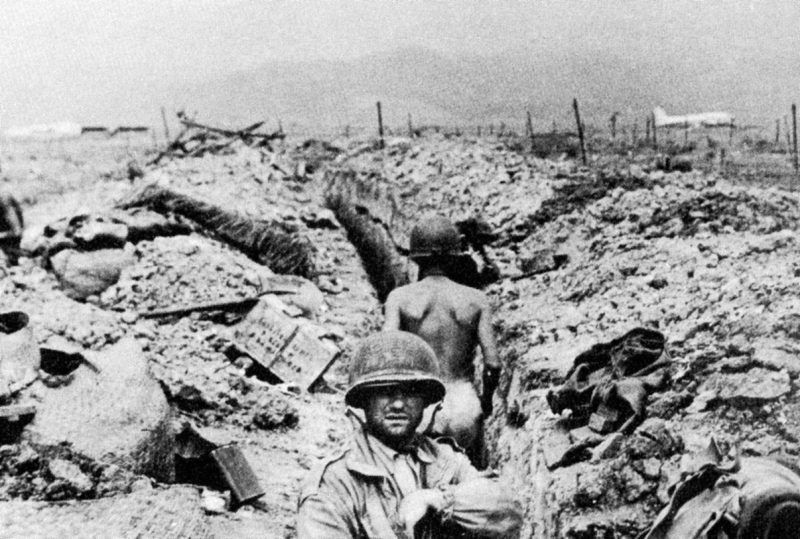
The First Indo-China war broke out shortly after the end of the Second World War and lasted until 1954. French soldiers were dispatched to deal with the growing tide of Communist activities in the colony and to prevent popular nationalist forces from wresting control of the colony. Pivotal in this bloody struggle was the battle of Dien Bien Phu.
Realising that his forces were losing ground to the hit and run guerilla tactics of the Viet Minh, the French commander, Henri Navarre, adopted a new military concept provided by his advisor, Colonel Louis Berteil, which he believed would counter the guerilla activities and effectively lead to a forced Viet Minh withdrawal. Berteil devised the idea of emplacing a fortified position behind enemy lines by airlifting troops and material to a strategic area.
Once the area was fortified to repulse attacks from a besieging enemy, French forces could sally out at irregular intervals and cut the supply life line to Viet Minh soldiers in forward positions. Additionally, Navarre believed that The Viet Minh military commander, General Giap, rather than simply abandon his forward positions, would attempt to launch a conventional massed assault upon the French position and thus open the way to the wholesale destruction of the Viet Minh through artillery barrages and air strikes. The place chosen for Navarre to launch this ambitious plan was Dien Bien Phu.

Despite intense criticism from French officers, Navarre began to fortify Dien Bien Phu, by launching Operation Castor, in which 9,000 French soldiers were airlifted into the region. Soon thereafter, Dien Bien Phu, evolved into a heavily fortified position with armour and a garrison of 16,000 comprising Foreign Legionaries, colonial forces consisting of Moroccans and Algerians, as well French regular soldiers. Opposed to this formidable fighting force was an enormous force of 50,000 Viet Minh which Giap had massed on the outskirts of Dien Bien Phu.
On the 13th March, 1954, Giap launched his first assault preceded by a large scale artillery bombardment. The Viet Minh forces soon gained control of Outpost Beatrice and then withstood a fierce French counter attack. Emboldened by this initial success the Viet Minh artillery pounded the French base and destroyed the air strip, thus ensuring that all future supplies would have to be parachuted into Dien Bien Phu. On the 14th March the Viet Minh assaulted Outpost Gabrielle. A desperate attempt to relieve the Algerian forces under attack was repulsed with terrible losses and ultimately led to the Algerians being forced to abandon Outpost Gabrielle. A noose of steel was being drawn ever tighter around the French garrison.

Faced by ever mounting losses, the base commander, De Castries resorted to isolating himself more and more in his bunker, thus leading to an ever escalating demoralization of the French soldiers and a lack of a comprehensive command structure. On the 30th March, the Viet Minh gained further strategic ground by overrunning Outpost Dominique and Outpost Elaine but were repulsed by stiff resistance at Outpost Huguette. Despite the many successes of the Viet Minh, French forces too enjoyed a number of successful actions notably the destruction of an entire enemy regiment which was pulverized by fighter bombers and artillery. This particular action resulted in General Giap resorting to a type of trench warfare to complete the encirclement of Dien Bien Phu.
French resistance was, however, so resolute and effective that Viet Minh forces could be brought to the assault when faced with a direct choice to be shot by their own officers or to attack the enemy positions. Despite the determined French resistance and the corresponding loss in Communist personnel, Giap’s siege was to prove wholly successful. Cut off, undermanned and undersupplied, the surviving 3,000 French troops faced an overwhelming assault by 25,000 Communist soldiers on the 7th May and by nightfall Dien Bien Phu had fallen.
The loss of Dien Bien Phu was a complete military disaster for the French and led directly to the opening of peace talks with the Viet Minh and the division of Vietnam along the 17th parallel, thus effectively recognizing Communist control and authority over the whole of North Vietnam.
